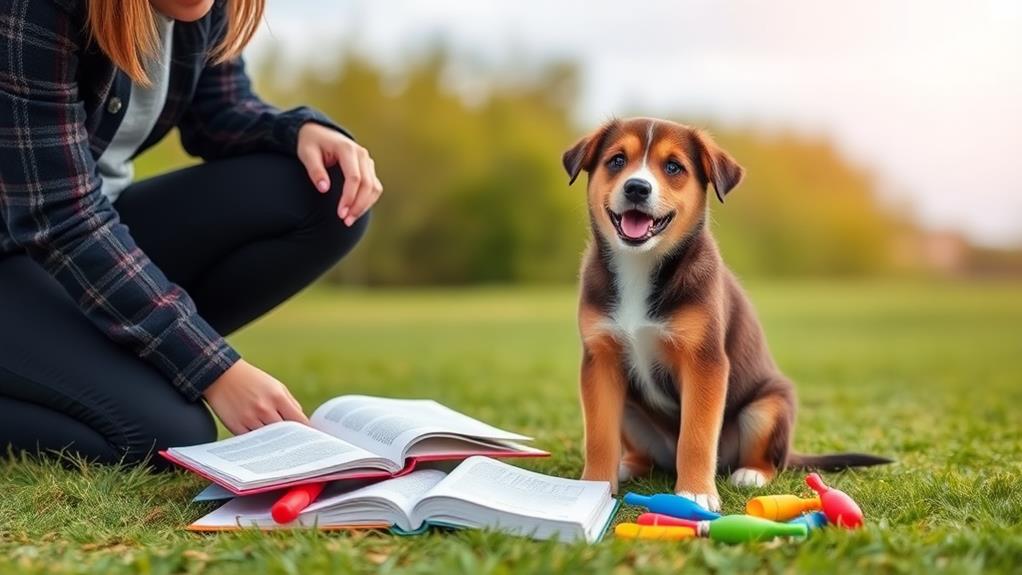To kickstart your dog training, start by understanding your dog's behavior. Set clear, achievable goals tailored to your dog's breed and personality. Use positive reinforcement, rewarding good behavior with treats or praise. Keep training sessions short to maintain your dog's focus and end on a positive note. Consistency is crucial—use the same commands and gestures across all household members. Socialize your dog early with different environments, people, and pets to build confidence. Ultimately, be patient; training takes time and trust. Each step builds a strong bond, and there's plenty more to explore on effective training techniques.
Understand Your Dog's Behavior

Understanding your dog's behavior is essential for effective training, especially since dogs communicate through body language and vocalizations. You need to pay attention to the signals your dog sends, as they can reveal their feelings and intentions. For example, a wagging tail doesn't always mean happiness; it can also indicate excitement or anxiety. Similarly, a raised hackles might suggest that your dog feels threatened or defensive.
Observe how your dog reacts in different situations. Is your dog fearful around strangers or overly excited at the park? Noting these reactions helps you tailor your training approach. When your dog barks, consider what they might be trying to communicate. Are they seeking attention, warning you of an intruder, or expressing discomfort?
Set Clear Goals
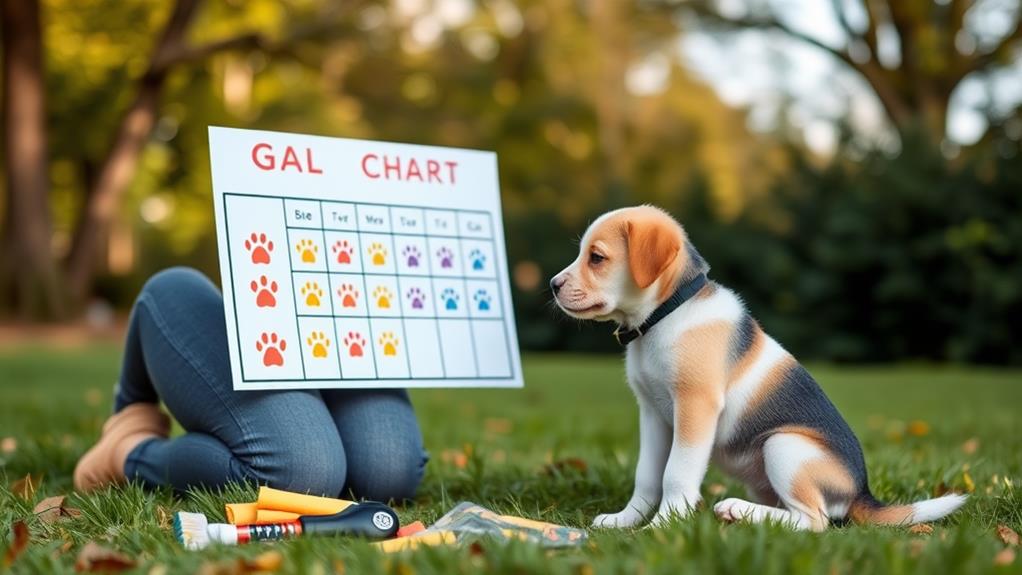
How can you guarantee that your dog training is effective? Setting clear goals is essential. When you have specific objectives, it's easier to track progress and adjust your methods.
Start by defining what you want to achieve with your dog. Here are four tips to help you set those goals:
- Be Specific: Instead of saying "I want my dog to behave better," try "I want my dog to sit on command 90% of the time."
- Make It Measurable: Use metrics to gauge success. For example, aim for your dog to stay in a sit position for five minutes before releasing them.
- Set Realistic Expectations: Understand your dog's breed, age, and personality. A young puppy might need more time to learn than an older dog.
- Create a Timeline: Give yourself a timeframe for achieving each goal. For instance, aim for your dog to master basic commands within eight weeks.
Use Positive Reinforcement
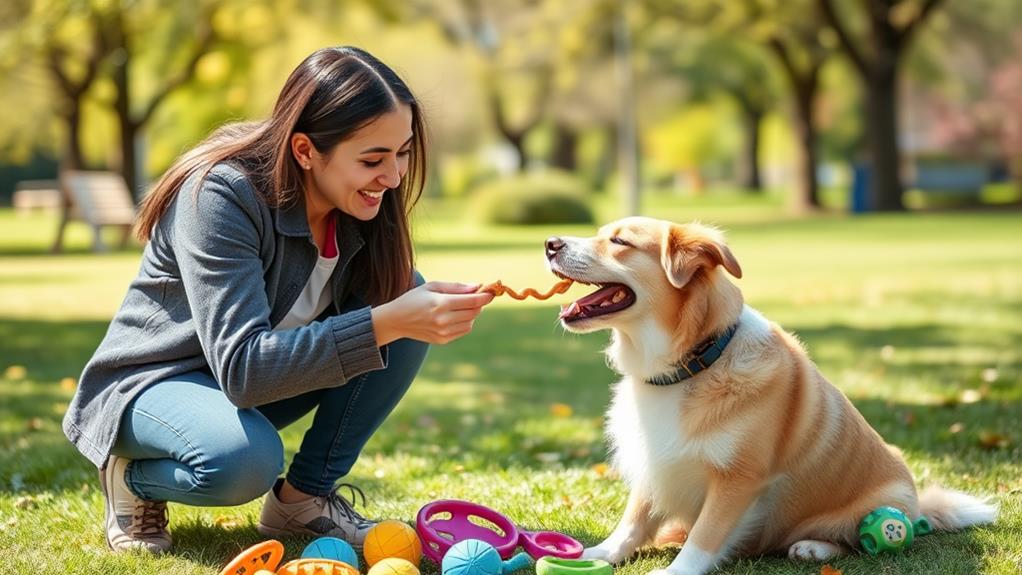
Once you've set clear goals for your dog training, the next step is to implement effective techniques that will help you achieve those objectives. One of the most powerful methods you can use is positive reinforcement. This technique involves rewarding your dog for exhibiting desirable behaviors, which encourages them to repeat those actions in the future.
Start by identifying what motivates your dog. Treats, praise, or even playtime can be effective incentives. Whenever your dog performs a behavior you want to reinforce—like sitting on command or not jumping up on guests—immediately recognize them. This creates a positive association in their mind, linking the behavior with a pleasant outcome.
Be consistent with your rewards. Use the same cues and treats each time to help your dog clearly understand what behavior you're praising. Remember, timing is essential; reward them within seconds of the desired behavior to guarantee they make the connection.
Avoid using punishment or negative reinforcement, as it can lead to fear and confusion. Instead, focus on building a trusting relationship with your dog through positive reinforcement, and watch your training sessions become productive and enjoyable for both of you.
Keep Training Sessions Short
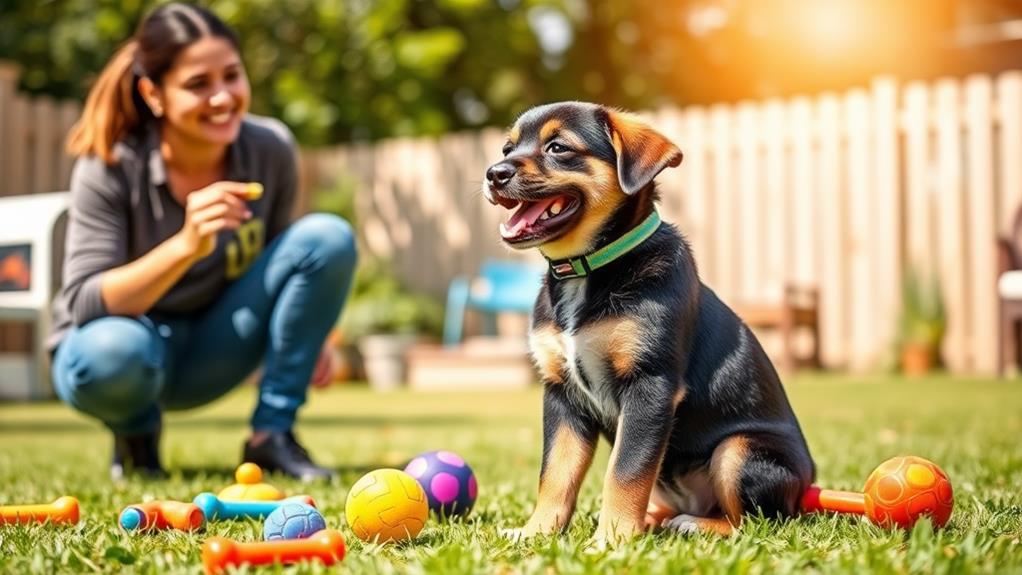
Keeping training sessions short is crucial for maintaining your dog's attention and enthusiasm. Dogs have limited focus, especially during the initial training stages. When you keep sessions brief, your furry friend is more likely to stay engaged and keen to learn. Aim for 5 to 10 minutes per session, and you'll see better results.
- Focus on One Command at a Time: Concentrate on teaching a single command or trick during each session to avoid overwhelming your dog.
- Use Breaks Wisely: Incorporate short breaks to let your dog relax and recharge. A few moments of play can refresh their energy and attention.
- End on a Positive Note: Always finish each session with a successful command or trick. This boosts your dog's confidence and excitement for the next training session.
- Train Multiple Times a Day: Instead of one long session, opt for several short ones throughout the day. This reinforces learning without causing fatigue.
Be Consistent With Commands
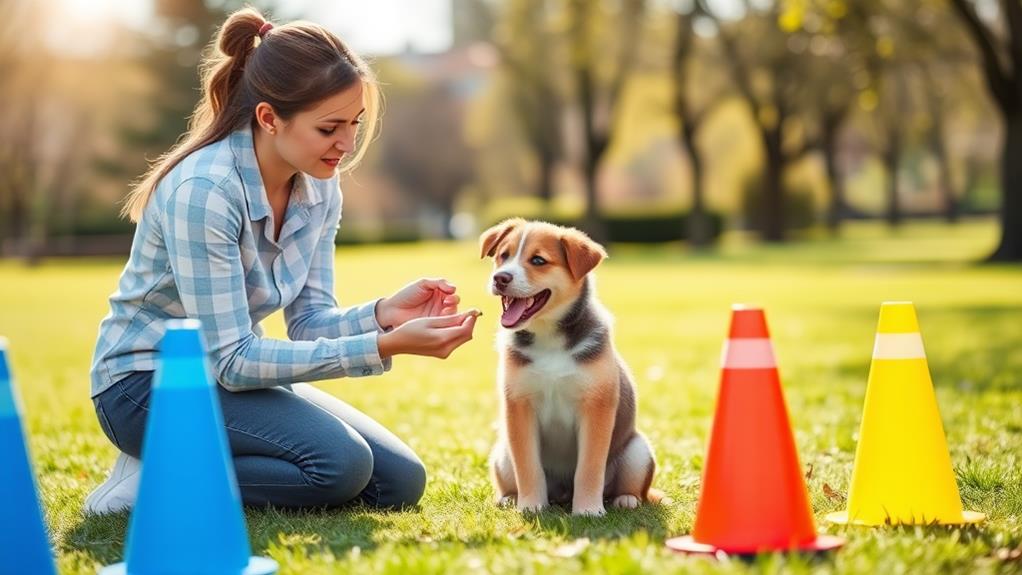
When it comes to dog training, why is consistency so important? Consistency helps your dog understand what you expect from them. Using the same commands for specific behaviors eliminates confusion. For example, if you use "sit" one day and "sit down" the next, your dog will struggle to connect the dots. Stick to one command for each action, and you'll see quicker results.
Equally important is your tone and body language. If you say "no" in a stern voice one time and a playful tone the next, your dog won't know how to respond. Keep your tone and body language the same each time you give a command. This reinforces what you're asking them to do.
Also, guarantee everyone in your household is on the same page. If family members use different commands or tones, it'll only confuse your pup. Create a list of commands you all agree on, and practice using them consistently.
Socialize Your Dog Early
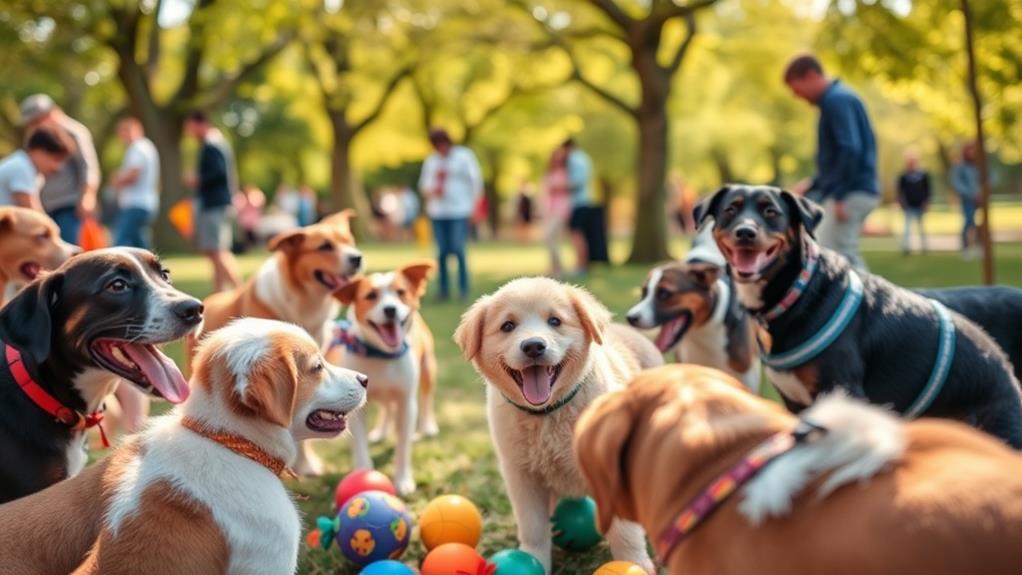
Socializing your dog early is essential for their development and behavior. The first few months of your pup's life are imperative for shaping their personality and reactions to the world around them. By exposing your dog to various environments, people, and other animals, you help them become well-adjusted and confident.
Introduce different environments: Take your dog to parks, pet stores, and busy streets. This helps them adapt to various sights and sounds.
Meet new people: Encourage friends and family to interact with your dog. This teaches them to be friendly and comfortable around strangers.
Engage with other pets: Arrange playdates with vaccinated dogs. This helps your pup learn proper social cues and how to communicate with their peers.
Attend puppy classes: These classes not only teach basic commands but also provide a controlled setting for your dog to meet others, ensuring a positive experience.
Patience Is Key
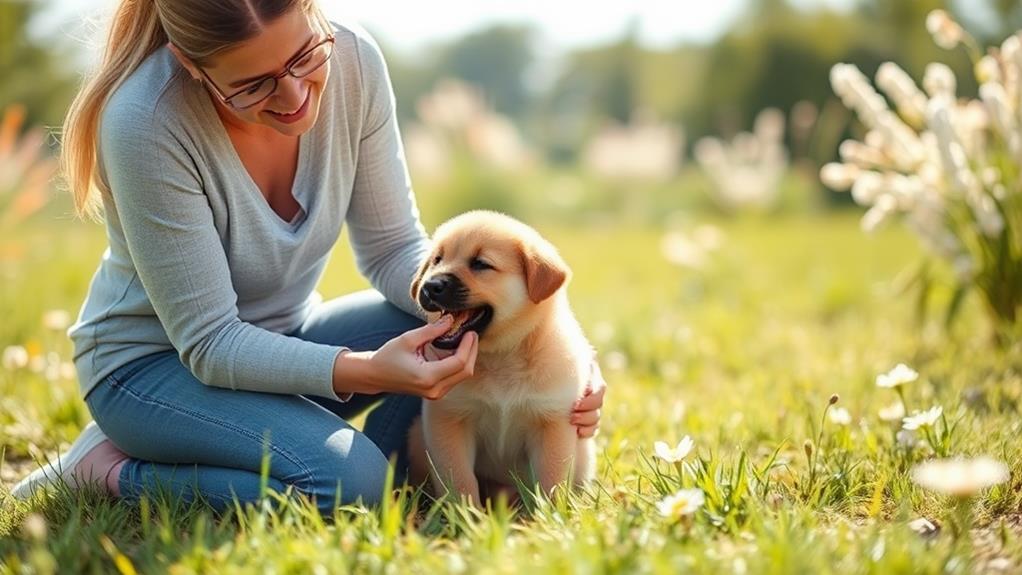
Why is patience so crucial in dog training? Training your dog isn't an overnight process; it takes time and consistent effort. Dogs, like people, learn at their own pace. If you rush the process, you might create confusion or frustration for both you and your furry friend.
When you approach training with patience, you give your dog the chance to understand commands and behaviors. Celebrate small wins, and don't get discouraged by setbacks. Remember, mistakes are part of learning! If your dog doesn't grasp a command right away, stay calm and try again later.
Using positive reinforcement can also help. Reward your dog with treats or praise when they succeed, reinforcing the desired behavior without adding stress. If you find yourself feeling impatient, take a break. A relaxed trainer creates a relaxed learner.
Ultimately, your patience fosters a strong bond between you and your dog. It builds trust, making your dog more willing to learn and respond. Embrace the journey, and enjoy the moments of growth and connection. With time and patience, you'll both thrive in your training efforts.
Frequently Asked Questions
What Age Is Ideal to Start Dog Training?
The ideal age to start dog training is around 8 weeks. At this age, your puppy's brain is primed for learning, and early socialization helps build good habits that last a lifetime. Start training today!
How Long Does It Take to Train a Dog?
Training a dog's like planting a seed; it takes time and care. Depending on your consistency and your dog's personality, you might see results in weeks or months. Stay patient, and you'll reap the rewards.
Can I Train My Dog Without Professional Help?
Yes, you can train your dog without professional help. With patience, consistency, and positive reinforcement, you'll build a strong bond and effectively teach your dog commands. Just remember, every dog learns at their own pace.
What Tools or Equipment Do I Need for Training?
When it comes to training your dog, you don't need to break the bank. A sturdy leash, comfortable collar, high-value treats, and clicker can make all the difference. You'll be on the right track!
How Do I Handle Distractions During Training Sessions?
To handle distractions, you'll want to start in a quiet area. Gradually introduce distractions, rewarding your dog for focusing on you. Consistency and patience are key, so keep practicing until they learn to ignore distractions.
Conclusion
Training your dog isn't just about teaching commands; it's about building a bond. As you commence this journey, remember that every small step counts. The truth is, the more effort you put into understanding and connecting with your dog, the more responsive they'll be. Stay patient and consistent, and celebrate those little victories together. Ultimately, dog training is a shared experience that strengthens your relationship, making it all the more rewarding for both of you.

